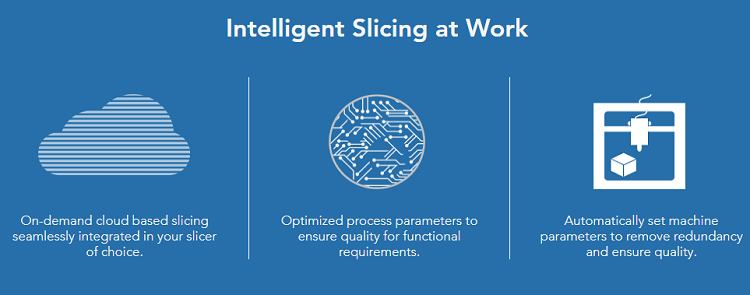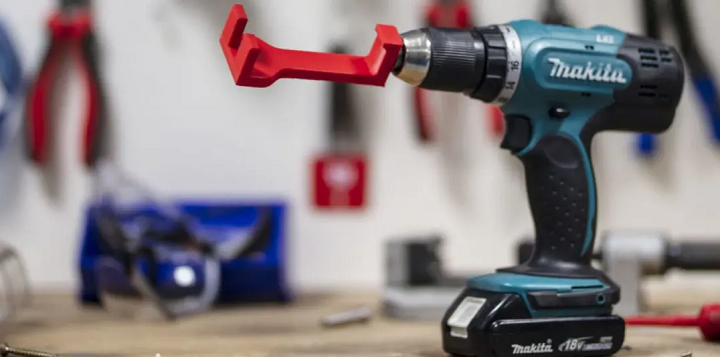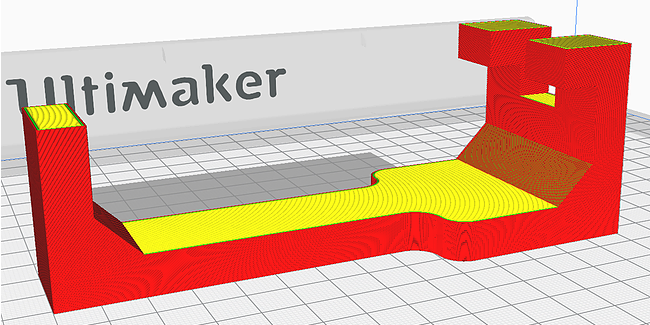AMUG Conference 2020 preview: who to see at the upcoming conference
3D Printing News Briefs: February 28, 2020
In today’s 3D Printing News Briefs, AMUG has announced the recipients of its two scholarships, Ultimaker is marking a milestone with a new online marketplace and new Cura features, and a company has created a revolutionary 3D printed helmet to help children with flat head syndrome.
AMUG Announces Scholarship Recipients
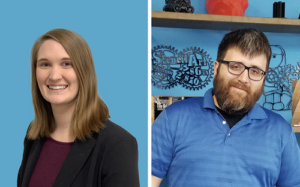 The Additive Manufacturing Users Group (AMUG) just announced the two recipients of its annual scholarships, who will now be recognized at the AMUG Conference in Chicago next month. The Guy E. Bourdeau Scholarship is awarded to one college student with a passion for AM, and this year it went to Katherine (Kate) Schneidau, who is pursuing a master’s degree in mechanical engineering at the University of Louisville. Chris Kaminsky, the Lakeshore Fab Lab manager at Muskegon Community College, received the Randy Stevens Scholarship, which is awarded to one educator who emphasizes or focuses on AM. Schneidau learned about SL, DLP, FFF, SLS, DMLM, and other methods of 3D printing through her engineering co-op, and taught others how to use the equipment, in addition to developing new process parameters for plastic and metal materials. Kaminsky makes 3D printing and design accessible to others by co-founding the MI3D organization, and is also a guest speaker about the technology.
The Additive Manufacturing Users Group (AMUG) just announced the two recipients of its annual scholarships, who will now be recognized at the AMUG Conference in Chicago next month. The Guy E. Bourdeau Scholarship is awarded to one college student with a passion for AM, and this year it went to Katherine (Kate) Schneidau, who is pursuing a master’s degree in mechanical engineering at the University of Louisville. Chris Kaminsky, the Lakeshore Fab Lab manager at Muskegon Community College, received the Randy Stevens Scholarship, which is awarded to one educator who emphasizes or focuses on AM. Schneidau learned about SL, DLP, FFF, SLS, DMLM, and other methods of 3D printing through her engineering co-op, and taught others how to use the equipment, in addition to developing new process parameters for plastic and metal materials. Kaminsky makes 3D printing and design accessible to others by co-founding the MI3D organization, and is also a guest speaker about the technology.
“I’m so excited to announce that Ms. Schneidau and Mr. Kaminsky have accepted the scholarships and will attend AMUG 2020,” said Brett Charlton, chair of the AMUG Scholarship Committee. “Once again, the pool of applicants was strong, and their experiences were vast. I’m certainly in awe—the experiences of our 2020 applicants in AM are astonishing, and it bodes well for AM’s future! The talent pool made it a challenge to select the right individuals, but both of our recipients are amazing and truly deserving of this honor.”
Ultimaker Introduces Marketplace and New Cura Features
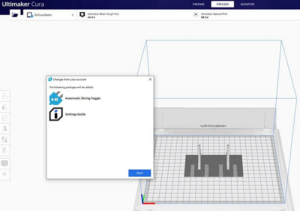 To celebrate its milestone of preparing 2,000,000 print jobs per week through Cura slicing software, Ultimaker launched a new online Marketplace, along with the release of Ultimaker Cura 4.5 and its additional features. Cura now has over 600,000 active users a month, and at the end of 2019, it was preparing twice as many print jobs per week as it had in 2018. Ultimaker Marketplace gives users access to plugins for standard software platforms, while the latest software release connects the Marketplace to Cura with new cloud functionality, which associates the plugins and optimized printing profiles directly with the user.
To celebrate its milestone of preparing 2,000,000 print jobs per week through Cura slicing software, Ultimaker launched a new online Marketplace, along with the release of Ultimaker Cura 4.5 and its additional features. Cura now has over 600,000 active users a month, and at the end of 2019, it was preparing twice as many print jobs per week as it had in 2018. Ultimaker Marketplace gives users access to plugins for standard software platforms, while the latest software release connects the Marketplace to Cura with new cloud functionality, which associates the plugins and optimized printing profiles directly with the user.
“Ultimaker Cura is continuously powered by its open source community and dedicated in-house software team. We see our user database is rapidly expanding every day with new students, makers and professional users. Where one user is more eager to manually tweak and test every setting available, others want to fully integrate 3D printing into existing workflows,” said Ultimaker’s CTO Dick Moerkens. “I am proud of our open approach and agile development strategy, which allows us to fully streamline and simplify the 3D printing workflow now and in the future.”
3D Printed TiMband Air Helmet
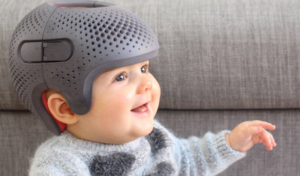 UK company Technology in Motion specializes in plagiocephaly (flat head syndrome) solutions for babies and children – namely, remolding helmets that are 3D printed so they’re more lightweight and comfortable. According to research, orthotic helmet treatment is the best way to treat severe head shape deformity, and the customizable TiMbandAir helmet (also known as the Talee in EU countries) is made with patent-pending bio-responsive technology for a better, more breathable fit – allowing the head to correct as it grows over four to six months. It has a unique three shell construction: the inner layer is a soft easy-clean liner to minimize sweating, while the mid-layer is important for shock absorption and offers flexible, gentle pressure, and the outer layer holds shape, gives strength, and provides protection. Thanks to 3D printing, these shells are also thinner than in other similar helmets, and the helmet features a breathable design to promote ventilation. Technology in Motion takes a photographic 3D scan of the baby’s head, and 3D printing, provided by partners at Invent Medical, ensures a custom fit. In 2018, the company received the prestigious Red Dot: Best of the Best design award for its recently launched TiMbandAir helmet, available in Technology in Motion clinics across the UK.
UK company Technology in Motion specializes in plagiocephaly (flat head syndrome) solutions for babies and children – namely, remolding helmets that are 3D printed so they’re more lightweight and comfortable. According to research, orthotic helmet treatment is the best way to treat severe head shape deformity, and the customizable TiMbandAir helmet (also known as the Talee in EU countries) is made with patent-pending bio-responsive technology for a better, more breathable fit – allowing the head to correct as it grows over four to six months. It has a unique three shell construction: the inner layer is a soft easy-clean liner to minimize sweating, while the mid-layer is important for shock absorption and offers flexible, gentle pressure, and the outer layer holds shape, gives strength, and provides protection. Thanks to 3D printing, these shells are also thinner than in other similar helmets, and the helmet features a breathable design to promote ventilation. Technology in Motion takes a photographic 3D scan of the baby’s head, and 3D printing, provided by partners at Invent Medical, ensures a custom fit. In 2018, the company received the prestigious Red Dot: Best of the Best design award for its recently launched TiMbandAir helmet, available in Technology in Motion clinics across the UK.
“We are extremely proud of the TiMbandAir helmet. We have had an amazing response so far, with almost 50% of parents opting for the TiMbandAir since its launch,” said Steve Mottram MBAPO, Managing Director of Technology in Motion. “We understand the distress, uncertainty and confusion parents undergo and we are excited to offer parents an improved form of flat head syndrome treatment for the future.
Discuss these stories and other 3D printing topics at 3DPrintBoard.com or share your thoughts in the Facebook comments below.
The post 3D Printing News Briefs: February 28, 2020 appeared first on 3DPrint.com | The Voice of 3D Printing / Additive Manufacturing.
Teton Simulation’s Software Automatically Finds and Tests Optimal 3D Printing Parameters
In order to achieve successful 3D prints, you need optimal print parameters. Enter slicing software, right? But, most slicers do not have a capability that would make things even easier – physical part simulation, in addition to a recommendation system for choosing those parameters.
US additive manufacturing software startup Teton Simulation, headquartered in Wyoming, is in the latter phases of R&D, and working towards production commercialization, for a really interesting technology called Intelligent Slicing. Teton was one of eight companies selected to present at last year’s RAPID + TCT Innovation Auditions, and is planning to officially announce its technology at this year’s AMUG Conference in March.
“The job of a slicer is simple: convert part geometry to instructions for 3d printers. Modern slicers do a great job of accomplishing this while providing the user with near complete control over how a part is printed,” Teton’s VP of Product Doug Kenik told 3DPrint.com. “However, while offering up these controls, slicers fail to provide any guidance into how these controls should be configured in order produce a part that must meet real-life performance requirements. This forces people into the tedious and time-consuming cycle of printing parts, testing them, then adjusting the print profile until they stumble upon a part that meets the requirements. At this point, they have a part that works, but have wasted countless days or weeks of productivity, machine time, and material.”
Physics-based Intelligent Slicing can be easily embedded into existing slicer programs. But, what exactly does Intelligent Slicing do?
“Our technology addresses the gap in the design cycle by guiding the user as to which print parameters to use in order to meet performance requirements while minimizing print time and material usage,” Kenik continued. “The first integration of our technology will be with Cura, which is a great starting point since they are one of the world’s most popular slicers for FFF parts. As a user, all you have to do is define end-use requirements, and then our optimizations routines churn in the background and deliver a list of optimized print profiles that the user can choose from. Since our technology runs in the cloud, we are able to run many parallels simulations which result in blazing fast solution times. At the end of the day, our objective is to save the user time by eliminating print iterations, increase productivity and machine throughput, and reduce material waste.”
According to the Teton website, its proprietary software technology can help users quickly achieve “automatic validation and optimization” of parameters so that parts meet the necessary manufacturing and performance requirements.
“We are currently commercializing technology that will optimize FFF/FDM part print parameters for manufacturing and performance requirements while minimizing print time, with the aim to reduce manufacturing cycles by an order of magnitude,” Rick Dalgarno, the Director of Alliances and Operations at Teton, told us. “Our technology is being integrated into commercial slicing products with the intent of embedding “intelligence” into slicers that is simple to use and fast.”
Dalgarno tells us that Intelligent Slicing automatically selects 3D printing parameters for optimal structural performance of parts.
A common way to determine the best print parameters is what Teton refers to in a blog post as the “build/break cycle.” If a 3D printed part breaks during testing, you can go back, change some of the parameters, and try it again until you finally have a part that doesn’t break, meaning you’ve landed on a valid set of parameters. Obviously, 3D printing does speed up this process, but it still takes time.
Slicing software is, according to Teton, “entirely disconnected from the initial design requirements,” and also requires a “staggering” amount of print parameters, which are unfortunately necessary as they are responsible for influencing how the part will actually perform in the real world. And while simulation software can help predict how a part will perform without the need for a physical model, a lot of these solutions require a decent amount of prior knowledge. Additionally, even if the software can portray a part’s internal structures, the accuracy of the model is not always perfect.
Teton’s Intelligent Slicing technology can not only optimize and validate print parameters, but also predict their impact on a 3D printed part’s performance. The software offers an intuitive, repeatable, and simple process to slice parts and help lower print iterations.
“Our intent is to remove the ambiguity and confusion of defining slicing parameters by automating the process and identifying the best potential paths the user can take to make a superior part, faster – a process we refer to as Intelligent Slicing,” the website states.
The company provides a good example of how to use its physics-based simulation tool with a bicycle pedal fixture that needs to be optimized for 3D printing.
The simulation tool is embedded in the slicer in order to optimize print parameters and validate the part’s structural performance.
“Let’s focus on infill density for the moment. Imagine that a part is required to have a factor of safety equal to 2. We can think of this as requiring the part to be twice as strong as it needs to be in operation,” the Teton blog states. “What infill density should we use to obtain the desired part strength?
“Suppose that we would like to see if an infill density of 20% would suffice. This value would result in relatively faster print times and lower material usage, but that’s useless if the part doesn’t perform.”
The Intelligent Slicing solution allows users to leverage simulation in the slicer itself to virtually test the part before ever pushing “Start Print Job.” If you receive negative results, no problem – just change the infill density until you find one that works.
Teton software’s optimization capabilities are great, because Intelligent Slicing can easily tweak multiple possibilities, like layer height and width, the number of walls, and how many top or bottom layers a print might need. Just add the part’s requirements and with the simple press of a button, the software will “intelligently” search all the possibilities until it’s landed on valid parameters.
“Let’s consider this approach for the pedal fixture,” the blog continues. “After setting the requirement for a factor of safety to 2 and specifying how the part will be loaded and anchored, Teton’s software can be used to validate a user-defined set of print parameters or search for optimal choices for valid print parameters. As before, we focus on changing only the infill of the model, but this time, we give the task to the optimization software. In addition to tuning the infill density, our software will also test local variations in infill density using modifier meshes. Such spatially-varying infill properties can be used to great effect for structural performance, as they allow us to target inherently weaker areas of the part.”
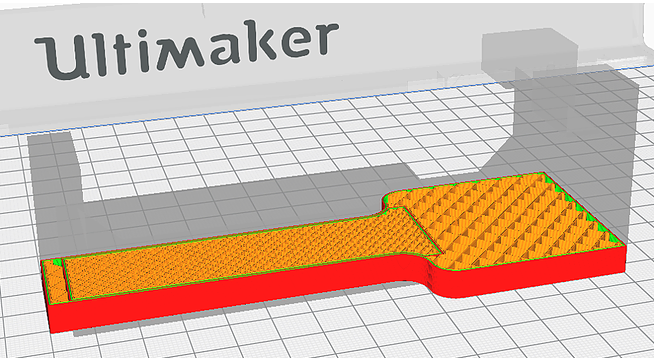
Sliced, optimized part: The modifier mesh is in the middle, surrounded by its own walls, which contribute to part strength.
For increased strength, Intelligent Slicing also added a modifier mesh to the middle of the pedal. This helped achieve a set of parameters that resulted in “significantly less time and material usage” than changing up the global infill density would have.
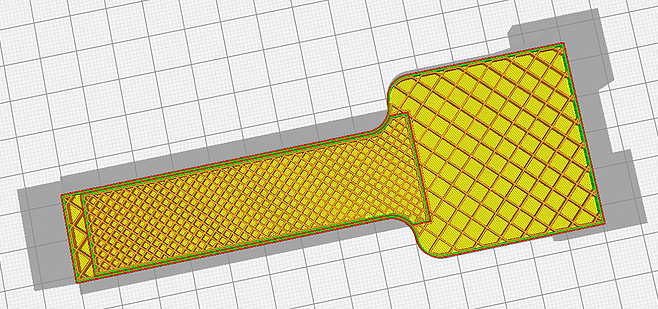
The infill density inside the modifier mesh (45%) is noticeably higher than in the rest of the part (20%); a result of the localization of material to improve structural performance.
“Most of the structural simulation tools on the market are “analyst-level” tools, and we recognized that most people simply don’t have the education or training to feel comfortable in analyst-level workflows. In order to serve a broader market, we decided to develop a tool that could be used by anyone. This means that we had to figure out a way to automate all of the tasks that would typically require an analyst skill set,” Kenik told us about Teton’s target audience. “The end results is a highly automated workflow that is so easy to use, new users can be up and running in literally minutes. A lot of sophistication goes into making engineering software simple but we are very pleased with how we have been able to create an optimization tool that is highly accessible.”
I’ll be curious to hear the reviews of Intelligent Slicing, and see if Teton’s software is as good as it sounds.
Discuss this and other 3D printing topics at 3DPrintBoard.com or share your thoughts below.
[Images: Teton Simulation unless otherwise noted]
The post Teton Simulation’s Software Automatically Finds and Tests Optimal 3D Printing Parameters appeared first on 3DPrint.com | The Voice of 3D Printing / Additive Manufacturing.
3D Printing News Briefs: July 6, 2019
In this installment of 3D Printing News Briefs, we’re sharing some business news with you, along with a case study about a 3D printer farm. First up, AMUG just installed its new board for 2019-2020. Then, Print Parts Inc. has launched its new additive manufacturing website. Finally, BCN3D is showing the world how it produces parts assembled on its 3D printers at the company’s Print Farm.
AMUG Installs New Board Members

The 2019-2020 AMUG Board. Front row (L to R): Leslie Frost, Gary Rabinovitz, Jamie Cone, and Todd Grimm. Back row (L to R): Andrew Allshorn, Vince Anewenter, Tom Sorovetz, Carl Dekker, and Paul Bates.
The Additive Manufacturing Users Group (AMUG) has installed its nine-member board for 2019-2020. The new board, made up of appointed and elected positions, will build and oversee the next AMUG Conference, as well as develop an organizational structure to support the continued growth of the annual 5-day event, which will next be held in Chicago from March 22-26, 2020. Each member of the board serves as an AMUG officer, and the industry professionals were elected during this year’s AMUG Conference. Carl Dekker of Met-L-Flo has replaced Paul Bates of UL as the new AMUG President; Bates has now taken on the role of Past President.
“I am excited to be AMUG’s 2020 president,” said Dekker. “We have an excellent and experienced team leading us on the path to the next event. The recent growth of AMUG has been astounding! This brings many challenges, which I am pleased to say the new AMUG Board is being very proactive in addressing.
Additional board members are:
- Vice President: Jamie Cone, BD
- Vice President: Andrew Allshorn, At 3D-Squared
- Event Manager: Tom Sorovetz, FCA
- Secretary: Leslie Frost, GE Additive
- Chairman: Gary Rabinovitz, Reebok
- Treasurer: Vince Anewenter, Milwaukee School of Engineering
- AM Industry Advisor: Todd Grimm, T. A. Grimm & Associates
New Additive Service Website Launched
 There’s a new additive manufacturing service in town for when you need on-demand, 3D printed performance and production-grade parts: New York-based Print Parts Inc. recently launched its new PrintParts.com website. The company’s mission is to help its customers achieve on-demand printed parts at an affordable costs, and it is also one of the first AM services that offers composite parts made on Markforged 3D printers. Clients can order flexible quantities – from 1 to 1 million – at competitive prices, 3D printed out of materials like carbon fiber, Kevlar, Nylon, and Onyx. The company helps its customers navigate the entire process from start to finish, including consulting, industrial design services, and even technology-specific feedback. PrintParts.com is celebrating its launch by offering a 25% discount on part orders during its first month of operation. In addition, the first 100 customers will receive a special gift package, including stickers, a branded operator’s apron, and a PrintParts t-shirt.
There’s a new additive manufacturing service in town for when you need on-demand, 3D printed performance and production-grade parts: New York-based Print Parts Inc. recently launched its new PrintParts.com website. The company’s mission is to help its customers achieve on-demand printed parts at an affordable costs, and it is also one of the first AM services that offers composite parts made on Markforged 3D printers. Clients can order flexible quantities – from 1 to 1 million – at competitive prices, 3D printed out of materials like carbon fiber, Kevlar, Nylon, and Onyx. The company helps its customers navigate the entire process from start to finish, including consulting, industrial design services, and even technology-specific feedback. PrintParts.com is celebrating its launch by offering a 25% discount on part orders during its first month of operation. In addition, the first 100 customers will receive a special gift package, including stickers, a branded operator’s apron, and a PrintParts t-shirt.
“Print Parts. That’s what we do,” explained company founder Robert Haleluk. “Our team creates functional prototypes, high quality concepts, and performance parts to help customers take on mission critical projects with confidence. We love what we do and put passion into every part we print.”
Video & Case Study: Producing Parts at the BCN3D Print Farm
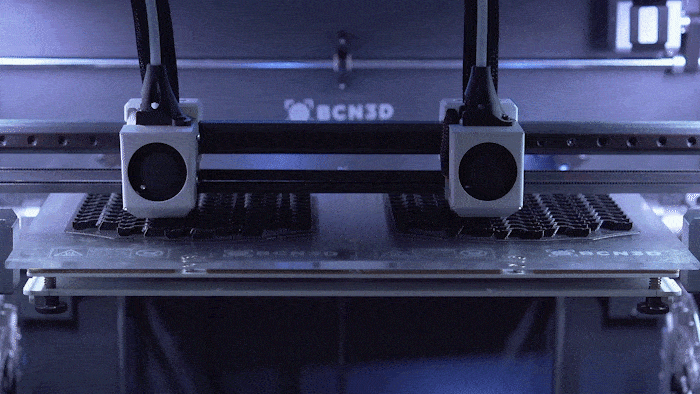 Desktop 3D printer manufacturer BCN3D Technologies, based in Barcelona, uses its breakthrough IDEX (Independent Dual Extruder) technology at the BCN3D Print Farm to double its 3D printer production capacity. At the Farm, 63 printers are working 24/7 to manufacture 10,000 pieces per month. In a recent case study, the company explains how it produces 47 plastic Sigma and Sigmax pieces, which are assembled by its printers at the Print Farm.
Desktop 3D printer manufacturer BCN3D Technologies, based in Barcelona, uses its breakthrough IDEX (Independent Dual Extruder) technology at the BCN3D Print Farm to double its 3D printer production capacity. At the Farm, 63 printers are working 24/7 to manufacture 10,000 pieces per month. In a recent case study, the company explains how it produces 47 plastic Sigma and Sigmax pieces, which are assembled by its printers at the Print Farm.
“We think it will have a huge impact for those companies and users wanting to produce small series,” Marc Felis, the BCN3D Marketing Manager, told 3DPrint.com about the video the company produced about its Print Farm and IDEX technology.
IDEX allows BCN3D printers to control both toolheads independently, which makes it possible to double the production capacity for pieces like the Vertical Bowden, which holds the 3D printer’s Teflon tube in place and made with PET-G material at the BCN3D Print Farm. Customers who use IDEX technology can also cut labor, machinery, and maintenance costs in half, as well as decreasing printer downtime. Additionally, the technology is very clean, because it prevents molten plastic from dripping into printed pieces. To see how your company could speed up the production workflow while keeping costs reasonable, check out the video below:
Discuss these stories and other 3D printing topics at 3DPrintBoard.com or share your thoughts in the Facebook comments below.
The post 3D Printing News Briefs: July 6, 2019 appeared first on 3DPrint.com | The Voice of 3D Printing / Additive Manufacturing.




